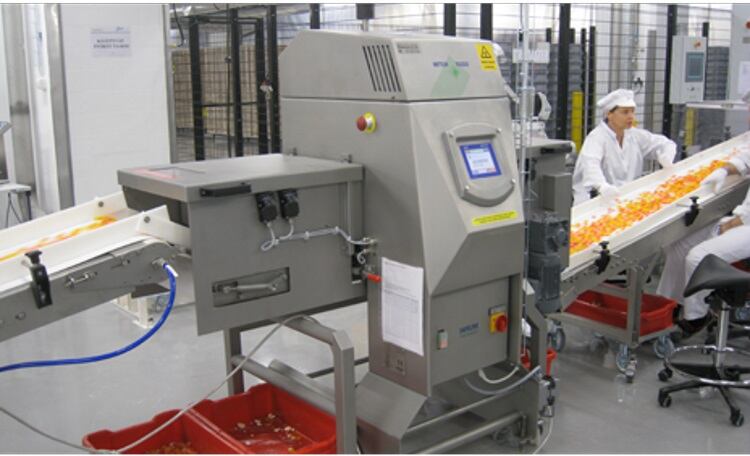
Seemingly small measures – implemented without compromising product safety – can have a profound effect: Imagine the difference that an improvement of just 4% in manufacturing and packaging productivity would make to your business, especially when allied to correspondingly enhanced sales revenues and reduced labour costs.
These kinds of results were realised by a US snack manufacturer, simply by implementing two simple product innovations within the product inspection testing regimes of its production lines. The company invested in metal detection equipment with a reduced test mode, which – through continuous monitoring of contamination detection sensitivity, enables fewer production line stops for testing. This alone increased its production line efficiency by 2.9%.
The incorporation of an automatic test system on the metal detector means that tests can also be completed in seconds, rather than minutes. Consequently, production line efficiency at the snack manufacturer was improved by 1.3%.
Further production inspection features have included advanced x-ray inspection software that has minimised False Reject Rates (FRR), reducing waste and rework costs. Its FRR has gone down from seven in every 10,000 packs to just two in every 10,000.
Meanwhile, advanced checkweighing and vision inspection systems are also helping the manufacturer to significantly reduce product giveaway and streamline product set-up times – plus, provide real-time data collection.
In summary, the manufacturer has been successful in reducing the Total Delivered Cost (TDC) of a packaged good – a measure that goes beyond Total Cost of Ownership (TCO). TDC includes operational costs such as those of the physical product, packaging, labour for production and quality checks, waste product and packaging, and transport. As a means of improving production line efficiency while lessening business risk, reducing TDC should therefore be an important strategic consideration for manufacturers.
Risk reduction
Protecting a manufacturing business in the current climate calls for other factors to be considered too. These include:
- Renting equipment to overcome CAPEX constraints
- Testing technology before investing
- Maximising the operational life of manufacturing equipment
- Keeping spare parts onsite to reduce downtime
CAPEX may be constrained or entirely frozen right now. Renting is therefore a great option, allowing you to bring in additional product inspection technology at short notice, to ensure that all products complete the same strong quality assurance checks. This means you can increase production capacity thereby meeting spikes in demand without committing to a large investment.
If you are even unsure of what technology would be best to rent then look out for free product evaluation and testing services, known in the industry as ‘test before you invest’. This is where you can remotely experience live inspection technology demonstrations at test centres using your own product samples. All the tests are also based on real-life product needs, for example temperature and production line speeds. Most importantly, you can receive an individual evaluation report detailing attainable inspection accuracy, performance, and contaminant detection sensitivity plus benchmark different technologies’ performance against one another.
Post-purchase, there are numerous ways that you can extend the operational life of your product inspection technology. Regular preventative maintenance programmes ensure components and systems are refurbished or replaced in a timely manner thereby helping to avoid unnecessary downtime; hardware and software upgrades can also help to future-proof your technology investment.
The modular design of many modern product inspection systems also puts certain performance maintenance tasks in the hands of manufacturers, with operator replaceable parts meaning less engineer call outs and downtime. To reduce business risks, you should consider keeping stores of spare parts on site, so there is less chance of your production lines standing idle, waiting for an engineer to visit.
For manufacturers, all these protection measures are relatively quickly and easily put in place, and their benefits are manifold, including higher levels of efficiency and productivity, and greater levels of quality and waste control. Ultimately by reducing the financial and reputational risks to your business in these uncertain times you can help to future proof its success.
The Product Inspection division of Mettler Toledo is a leading provider within the field of automated inspection technology, with a diverse portfolio of brands such that includes Safeline metal and X-ray inspection, Garvens and Hi-Speed checkweighers, and CI-Vision and PCE Track & Trace.

